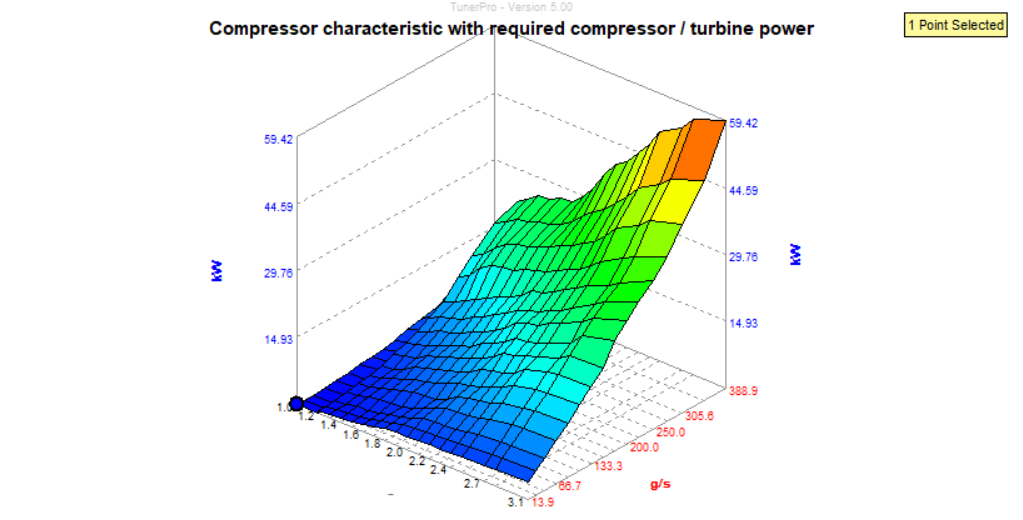Boost Control
Here we talk generally about how the B58 controls the turbo and more specifically about the maps you might need to recalibrate when changing from the stock turbo.
Boost control is a four step process
- Convert the boost target and error into power at the turbine wheel (i.e. how hard and fast the turbo should be spinning).
- The turbine power is converted to a wastegate position, which will provide this turbine power
- The DME applies some corrections to this position
- It then applies the I component of the PID error and any adaptation offset to get the final wastegate position.
Power calculation (TchCtr_Pwr)
The first job of the boost controller is to work out how fast and hard is should be spinning the turbo to meet the required boost pressure. As such, (required) boost pressure quantities are converted into (required) power at the turbine wheel (in kW). Likewise boost errors are converted into power errors.
Intuitively we can understand turbine power in terms of torque x rpm just as we can for engine power. As the boost pressure goes up, the air resistance on the compressor wheel also goes up so it needs more power to keep turning at the same speed. As the engine speed rises and the airflow picks up, we can picture the compressor chasing the air and so it will have to rotate faster to create the target boost and hence need more turbine power.
For this reason, the compressor characteristic (BMWtchctr_pwr_Pctl_M) will tend to rise with pressure and with RPM:
Note that the boost axis does not have any units because the boost pressure in the chargepipe is divided by the pressure before the turbo. This value is often called boost presure ratio.
The pressure before the turbo is ambient pressure minus any pressure drop across the air filter. The more air pulled through the filter, the more it gets in the way and hence this pressure drop becomes higher as airflow increases.
BMW call this calculation TchCtr_Pwr (Turbocharger control power) and related maps often share parts of the name. For reference, the complete set of maps and measurements feeding in and out can be seen below
Important maps in this function are
- Compressor characteristic. This drives the feedforward component of the power calculation. It outputs a power value in kW. The inputs are
- The target pressure ratio (unitless)
- The target mass airflow (often kg/h but g/s in the XDFs)
- WGDC_P_correction.


